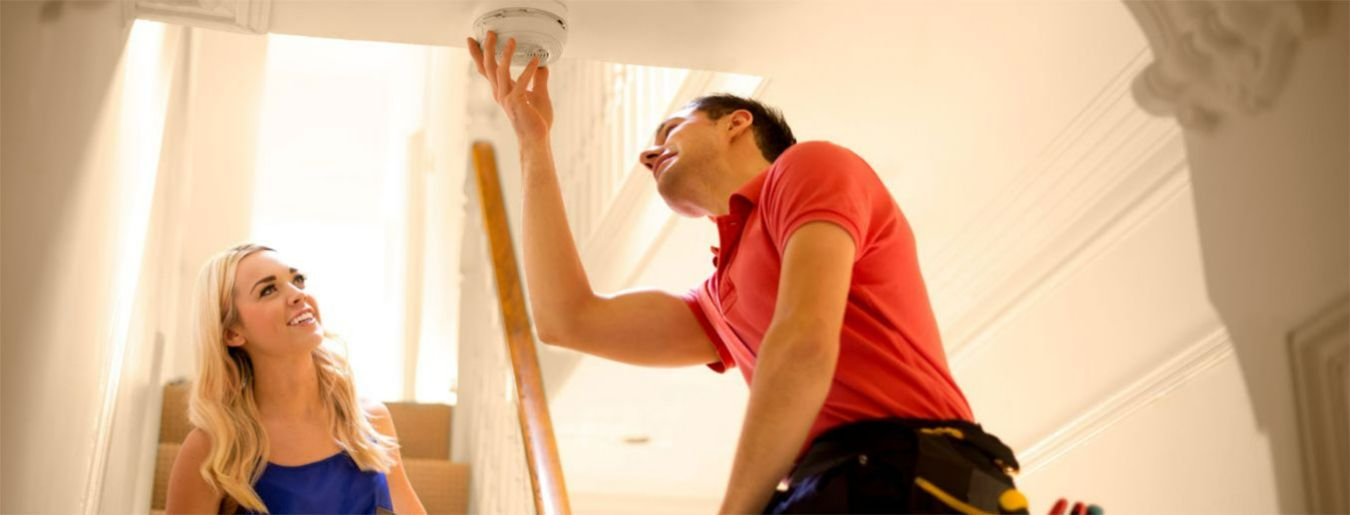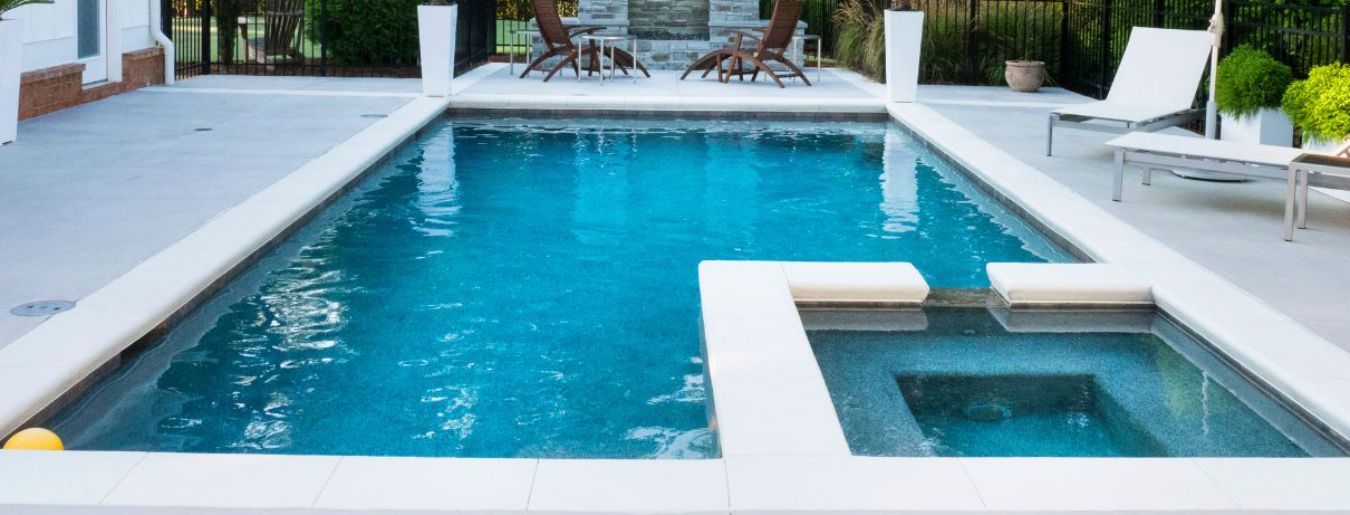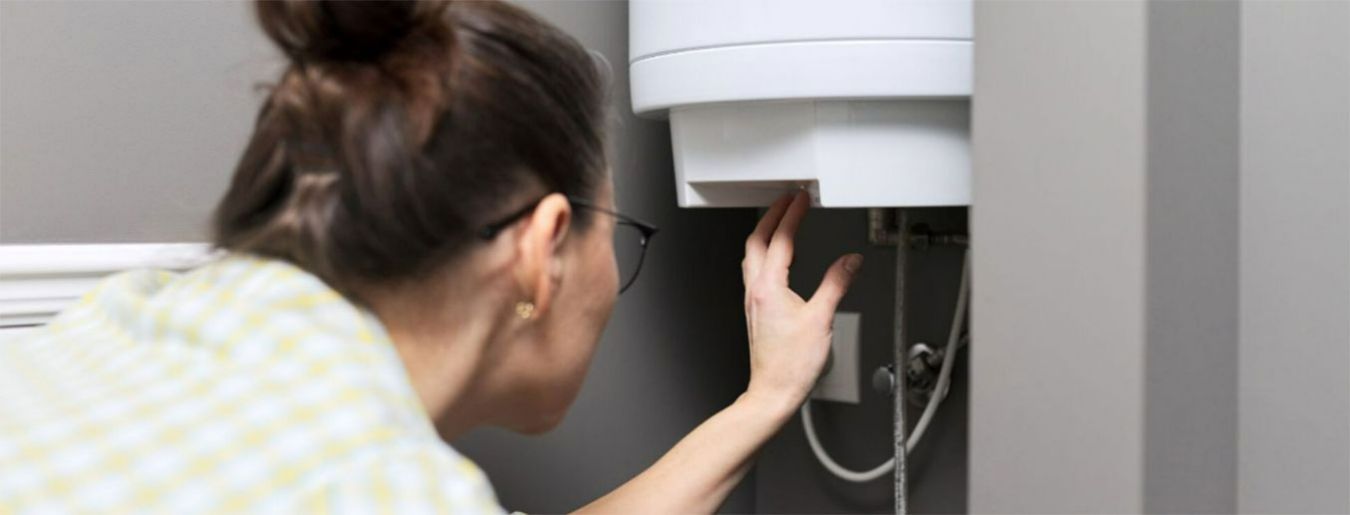Carbon monoxide and smoke detectors are imperative home safety devices. While most people understand the need to install and maintain detectors, they may be less confident about the best places to put them.
According to Ready.gov, an official website of the U.S. Department of Homeland Security, a small flame can turn into a devastating home fire in less than 30 seconds. Within minutes, thick smoke and raging flames can block or obscure avenues of egress. When a fire starts, time is of the essence. Fire alarm locations are important to consider because they can be situated to alert you to a fire before it gets out of hand, giving you the extra minutes or seconds you and your family need to safely escape.
This guide will explain where to hang smoke detectors and carbon monoxide detectors in your home to maximize their life saving potential.

Get Home Warranty Quotes
from Top Rated Authorized
Partners
Get a Quote
Types of Home Safety Detectors
The primary home safety detectors in modern homes are carbon monoxide detectors and smoke detectors or fire alarms. Of the latter, there are a couple of different types. Let’s explore the purpose and mechanism behind each kind of detector.
· Ionization smoke detectors. Some smoke detectors have two electrically charged plates that sandwich a small amount of radioactive material, such as americium. This material ionizes the air and creates an electrical current. If smoke enters the chamber of the detector, the electrical current is disrupted, and the alarm sounds. Ionization smoke detectors are particularly sensitive to small smoke particles that are associated with hot, raging fires that spread quickly.
· Photoelectric smoke detectors. Other smoke detectors leverage photoelectric sensors. A small light source shines on a sensor within the smoke detector’s chamber. If smoke enters the chamber, the light reflects and scatters, triggering another sensor and sounding the alarm. Photoelectric smoke detectors are more responsive to smoldering fires that release a great deal of smoke.
· Combination smoke detectors. Ionization smoke detectors and photoelectric smoke detectors are each specialized in detecting certain kinds of fires. Ionization detectors are likely to respond more quickly than photoelectric detectors to hot, flaming fires with little smoke. The opposite is true for smoky, smoldering fires. Combination smoke detectors incorporate both mechanisms to alert homeowners to any kind of fire as quickly as possible.
· Carbon monoxide detectors. Carbon monoxide is a gas that can cause illness or death when enough of it is breathed in. It is especially dangerous because it has no color and no smell, so people can breathe it in without knowing. Carbon monoxide is a byproduct of fuel-burning devices, such as heaters, woodstoves, and cars. A carbon monoxide detector houses a small amount of gel that changes color when it absorbs enough of the toxic gas. This color change triggers an internal sensor, which in turn sounds the alarm.
Where to Place Smoke Detectors and Carbon Monoxide Detectors
The National Fire Protection Association (NFPA) provides detailed guidance on where to place smoke detectors within a home. Local codes also have specific requirements related to the number and placement of smoke detectors and carbon monoxide detectors.
Here are some guidelines on ideal smoke detector locations and placement.
· Install at least one smoke detector on every floor of the house, including the basement, garage, and attic.
· Mount smoke detectors inside every bedroom and outside sleeping areas.
· Because smoke rises, the highest point in the room is usually best for smoke detector placement. Vaulted ceiling peaks may necessitate mounting a detector on the slope of the ceiling. The device should be more than four inches away from where the two faces of the ceiling meet, but not more than 36 inches away.
· If mounting on the ceiling is not possible, the best location for smoke detector placement is high on the wall, no more than 12 inches from the ceiling.
· When installing smoke detectors in a kitchen, place them at least 10 feet away from any cooking appliance. This can minimize the chances of false alarms during cooking.
· Avoid placing smoke detectors adjacent to ducts, vents, and windows to prevent the possibility of smoke drafting out of the room before the detector can sense it.
Beyond smoke detector placement, there are some additional safety measures to consider. Keep the following in mind:
· Smoke detectors should be on an interconnected network. This means that if one detector goes off, they all do. If a fire starts in the basement overnight, you may not immediately hear the basement alarm sound. If the detectors are interconnected, though, your bedroom alarm is sure to awake you. This might provide your family with the time it needs to get out of the house safely.
· To ensure compatibility between smoke detectors on a shared network, purchase devices from the same manufacturer.
· Never paint over smoke detectors or obscure them in any way. This can render them useless or less effective.
· If your home does not allow for wired smoke detectors on an interconnected network, be certain to change the batteries in each smoke detector twice per year. You can make changing the batteries part of a seasonal checklist, or simply get in the habit of doing so whenever you adjust the clocks at the beginning and end of daylight savings time.
· Use the test feature on your home’s smoke alarms every month to ensure all devices are working properly.
Carbon monoxide detector placement has some similar guidelines. Here’s what you need to keep in mind.
· Per NFPA guidance, place at least one carbon monoxide detector on every floor of the house, in every bedroom, and outside every sleeping area.
· Ensure a carbon monoxide detector is proximate to—but more than 10 feet away from—major appliances and fuel-burning machines. This means a detector should be in your laundry room, kitchen, and wherever your home’s main heat source is located.
· Because idling cars are a major source of carbon monoxide, it’s important to install a detector in the garage.
· The Environment Protection Agency (EPA) recommends mounting carbon monoxide detectors about five feet up the wall, but the agency acknowledges that ceiling placement is fine. Older guidelines recommended mounting detectors low on the wall because carbon monoxide is heavier than air, but this is not necessary because the gas spreads evenly.
· Avoid placing detectors immediately next to or above fireplaces and flame sources. Detectors should also not be placed in direct sunlight or in areas subject to high humidity, such as bathrooms.
As a final note, remember that both smoke and carbon monoxide detectors must be loud enough to awaken you from a deep sleep.




 Prev Post
Prev Post




